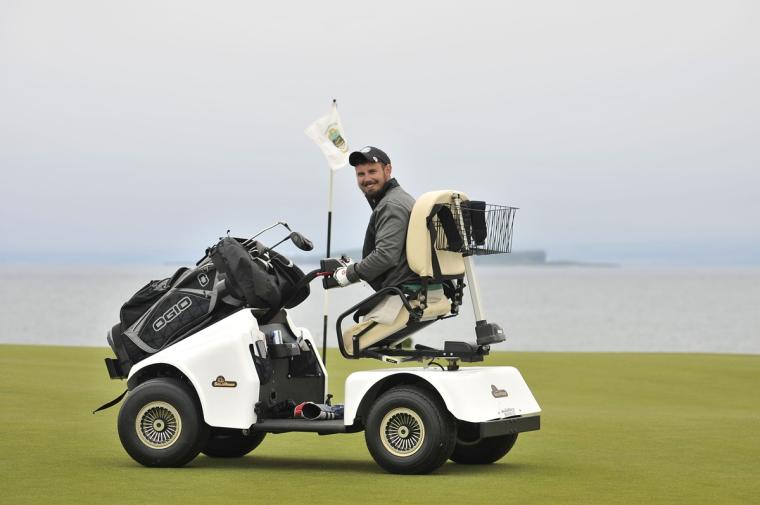
Between the PGA TOUR and LIV wars, bad behavior by drunken spectators at the Waste Management Open and Tiger’s breakup with Nike, golf is generating lots of ink these days, mostly for the wrong reasons. Here’s some great news, by contrast. More strides are being made to make the sport more accessible to those with mobility limitations and other challenges.
It’s all being driven by the National Alliance for Accessible Golf (the Alliance), which recently announced the launch of a self-assessment process to guide golf facilities toward recognition by the Alliance as an Accessible Golf Facility.
The certificate will identify and recognize golf facilities around the country that have taken the necessary steps to demonstrate a commitment to increasing the participation of individuals with disabilities in the game of golf.
The self-assessment process is accessible via the Alliance Education Hub located on GAIN – the Golf Access and Inclusion Network™. An overview of the process and how it works can be found at this link.
According to Dave Barton, PGA, Executive Director, “The process to attain the certificate is not a certification. It is a process designed to provide a clear path to better understand the essential actions critical to providing the foundation for a sustainable, welcoming environment at their facility, both physical and cultural. Facilities that conduct the self-assessment and earn the certificate demonstrate the value their leadership and staff place on access and inclusion in the game of golf for all.”
And, he adds, the ultimate goal of every course should be simple: “A person ought to be able to arrive at the golf course, park their car, get to the course, play all 18 holes, go to the 19th hole and have a drink or some food, and be able to get back to their car without encountering barriers.”

Unfortunately, it is not that simple at every course. The goal of the Alliance is to try to create a path through which courses can inventory the challenges they may unknowingly have, and work to remedy them. And, Barton notes, there are always workarounds. For example, a purpose-built cart for a seated golfer, a device that raises the golfer into position to hit a ball, is an expensive piece of equipment, and could be too pricey for one course to purchase.
“If a few courses pool their money and buy one of those vehicles that they can share, it’s a lot easier on everyone.”
Ultimately, the Alliance would like to have a database of golf courses nationwide that have received the certificate showing they are accessible; golfers who are traveling could pull up the list on their phones and find what is in their area, and what facilities it has. (For example, if the person is a seated golfer who requires a special cart, they can notify the course, who can let them know about the availability of this equipment.)
The total assessment, says Barton, can take a few hours – although if any work is needed to make a course fully accessible, that obviously can take longer.
In an age of social media, it pays dividends to try to create a facility that welcomes all golfers; a happy user will tell like-minded friends about the positive experience he or she had somewhere.
Of course, Barton adds, the opposite is equally true. “I get plenty of calls from golfers who tell me, “I was playing course X in town Y. They did not have a seated cart; aren’t they supposed to?”
Items critical to the creation of an inclusive culture include the following:
- An accessible website which serves as the first impression for most customers
- Barrier free access from the parking lot throughout the entirety of the publicly available buildings
- Golf course and other amenities offered
- Clear published policies related to matters of interest to individuals with disabilities
- Training
The training of club owners and operators, teaching them the finer points of accessibility, is offered by the Alliance. The importance of embracing leadership and staff training related to golfers with disabilities is a primary contributor to the establishment of an environment where all feel welcomed.
Barton continues, “There is a renewed and growing focus across the country on adaptive golf competitions to serve those already engaged in the game. However, we must remember, golfers generally begin their journey within their local community. Our goal is to help courses assess themselves, so they are best prepared to provide a place where any child or adult with a disability knows they are welcomed to come learn and play the game.”

Formed in the summer of 2001, the Alliance, a 501(c)(3) non-profit organization, is an industry leader in accessibility and inclusion and works to ensure the opportunity for individuals with disabilities to play the game. The Alliance works to accomplish its mission through education, advocacy, and resource development.
The National Alliance for Accessible Golf developed out of numerous working groups conducted in the mid-1990s involving leading golf associations, academia, and experts on the Americans with Disabilities Act (ADA) of 1990 when the golf industry recognized the ADA did not address the golf course itself. (The ADA, as many advocates for those with disabilities have noted, is considered a baseline rather than an end point; it mandates “reasonable accommodation” for those who need it, but it does not go into specifics.)
Since its inception, the Alliance has served as the primary industry resource for education and resources related to creating environments that are barrier free and inviting to current golfers with disabilities and those who seek to learn.
More information is available at info@accessgolf.org or www.AccessGolf.org.

